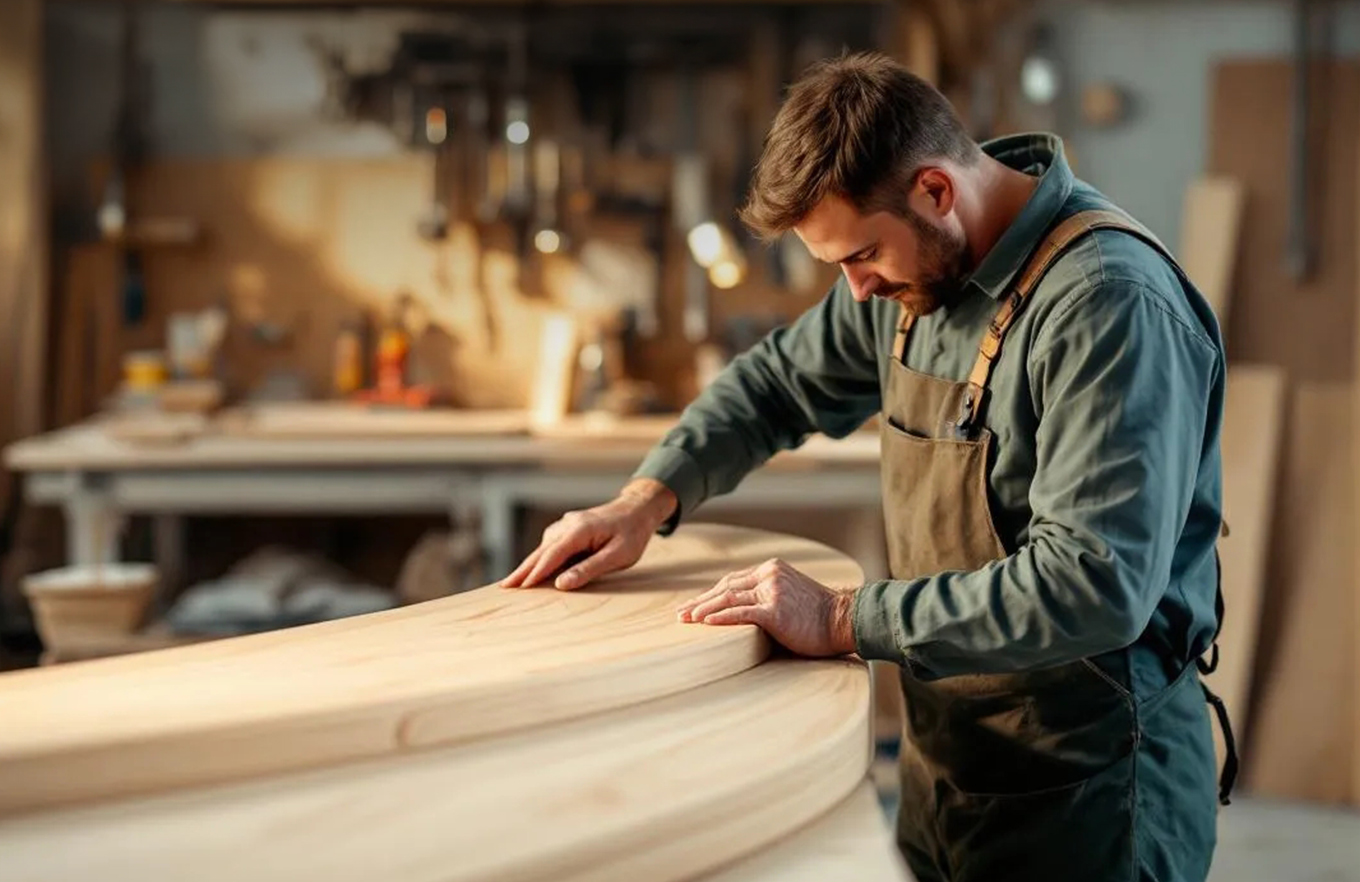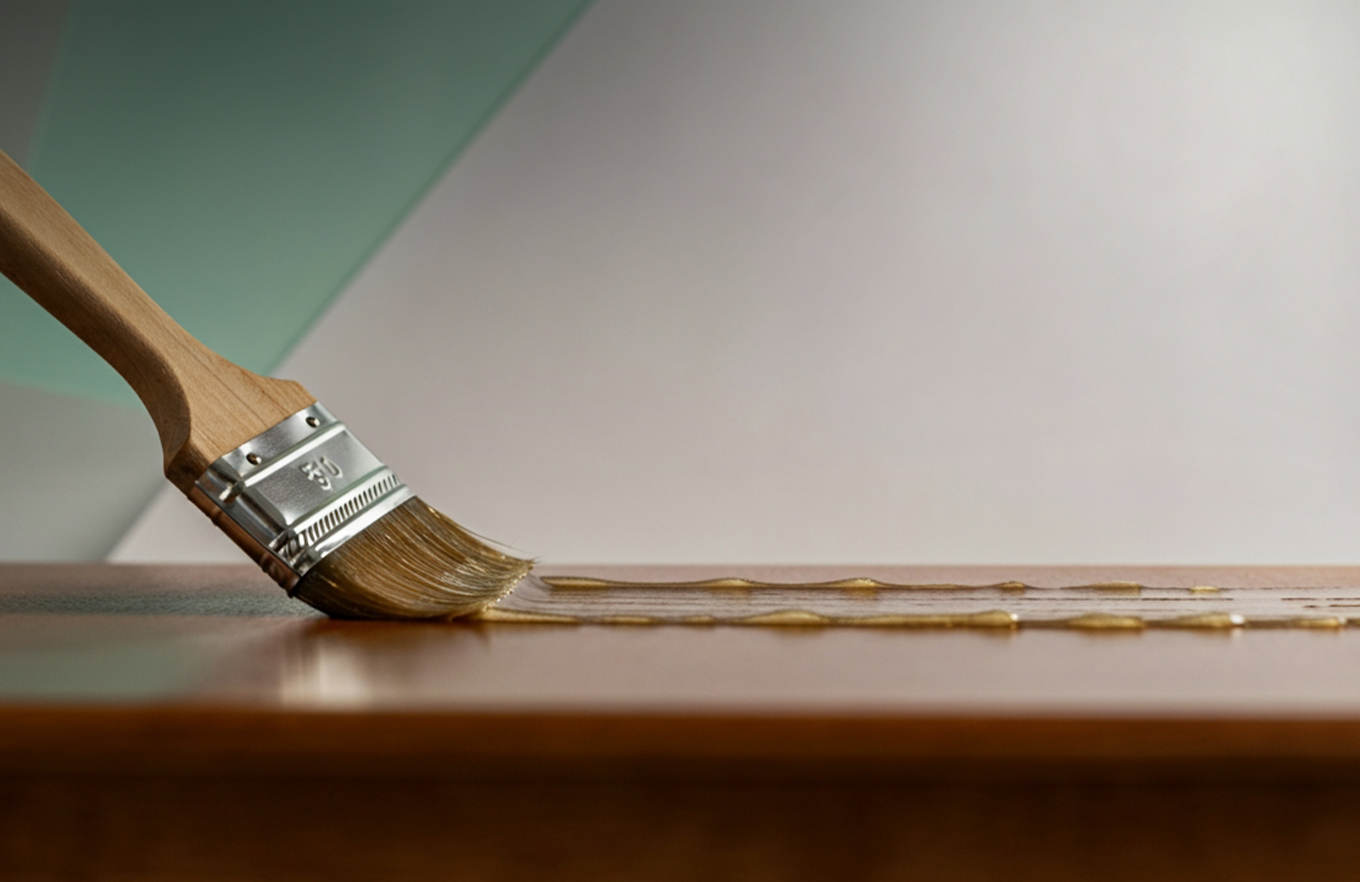October 20, 2025
Using contact adhesive for furniture requires more than just basic skill; it’s about precision, timing, and technique. For complex designs with curves, corners, or multiple layers, choosing the right adhesive and applying it correctly can make all the difference. This is why contact adhesives have become the gold standard in furniture manufacturing.
Their instant tack, flexibility, and long-lasting hold allow craftsmen to create seamless, durable bonds without the need for clamps or extended drying times. For furniture makers, especially those working with a leading industrial adhesive manufacturer, mastering these techniques ensures superior results on every project.
Before applying any adhesive, it’s essential to understand what makes contact adhesive unique. Unlike water-based glues, it bonds instantly upon contact, which means there’s no time for repositioning. This characteristic is both its biggest advantage and challenge, especially for intricate furniture designs.
Samad Group of Industries, a trusted name in adhesive technology, has long emphasized the importance of proper surface preparation and technique when using industrial-grade adhesives. Their expertise helps manufacturers achieve consistent, high-strength bonding across diverse materials like wood, laminate, foam, and metal.
Contact adhesives are particularly useful for furniture pieces that require flexibility, think of curved chair arms, layered panels, or upholstered surfaces. These adhesives ensure a uniform bond across irregular shapes, eliminating weak points that traditional glues often leave behind.

Not every adhesive performs equally across all materials. When working on detailed furniture, the adhesive you use determines the strength, flexibility, and overall appearance of the final product.
Here’s where Ultra Bond stands out. It’s a versatile adhesive designed for modern manufacturing, trusted by high-end furniture makers and industries such as automotive and textiles. With its superior tack and durability, Ultra Bond delivers consistent, long-lasting adhesion on even the most challenging surfaces.
Samad Group, as a leading industrial adhesive manufacturer, develops adhesives like Ultra Bond that are engineered to meet the demands of professional craftsmanship. Their products are formulated to handle pressure, heat, and environmental stress, ensuring that furniture maintains its integrity and finish over time.
Every successful bonding process starts with clean, smooth surfaces. Dust, oil, or residue can prevent the adhesive from bonding properly. Before applying contact adhesive, both surfaces must be dry and free from any contaminants.
For wooden or laminated furniture, lightly sanding the surface improves grip. Wipe off any fine particles before applying the adhesive. Professionals at Samad Group of Industries recommend using a lint-free cloth or an air blower for the best results. Proper surface preparation can enhance bond strength by up to 30%, ensuring longer durability in finished furniture.

Applying contact adhesive is about accuracy. Too much adhesive can cause bubbling, while too little may lead to weak spots. The best approach is to spread a thin, even layer on both surfaces using a brush or spray gun.
Let the adhesive dry until it becomes tacky but not wet, usually within 10 to 20 minutes, depending on temperature and humidity. This stage is critical because the adhesive bonds instantly once both surfaces meet. Once aligned, apply firm, even pressure across the surface to ensure complete contact.
Samad Group experts recommend using rollers or clamps to apply uniform pressure. This step is particularly important for complex furniture designs where even a small air gap can compromise the final bond.
Complex designs like curved edges or layered panels require extra care. In such cases, pre-cutting materials and dry-fitting them before applying adhesive is a good practice. This allows for better precision and avoids misalignment.
For curved sections, applying contact adhesive in multiple thin layers provides better flexibility. This prevents cracking or delamination when the furniture is bent or stressed during use. Using high-quality adhesives from Samad Group of industries ensures that even intricate shapes retain their strength and appearance over time.

Although contact adhesive forms an instant bond, allowing the piece to cure for at least 24 hours ensures maximum strength. Avoid exposing freshly bonded furniture to heat or pressure during this period.
Once cured, trim any excess material and inspect the edges for uniform bonding. A clean finish not only improves aesthetics but also prevents long-term peeling. Professional manufacturers, especially those associated with Samad Group, emphasize quality control at this stage to maintain consistent production standards.
Even skilled craftsmen can make errors that weaken the bond. The most common mistakes include applying uneven coats, joining surfaces too early, or failing to clean them properly. Additionally, over-application can cause visible ridges or bubbles once the surfaces are pressed together.
Experts at Samad Group, a renowned industrial adhesive manufacturer, recommend testing adhesive compatibility before full-scale application, especially when working with composite or synthetic materials. A small test patch can save time, cost, and prevent material wastage.
Looking to enhance your production quality with premium adhesives? Contact Samad Group today for expert solutions tailored to your manufacturing needs.
Mastering the application of contact adhesive for furniture is all about patience, precision, and product quality. When used correctly, it transforms ordinary furniture into long-lasting, professional-grade pieces. With reliable products like Ultra Bond and the technical expertise of Samad Group of Industries, furniture manufacturers can achieve the perfect balance of strength and craftsmanship.
In an era where design complexity meets efficiency, using the right adhesive not only improves structural integrity but also defines the final appeal of your furniture. Choose quality. Choose precision. Choose Samad Group.
The best adhesive is one that offers instant tack and flexibility, like Ultra Bond by Samad Group, designed for professional-grade furniture applications.
Allow the adhesive to dry until it becomes tacky, typically between 10 to 20 minutes, depending on environmental conditions.
Yes, high-quality adhesives from Samad Group of industries are suitable for multiple surfaces, including wood, metal, and laminate, offering durable and long-lasting bonds.